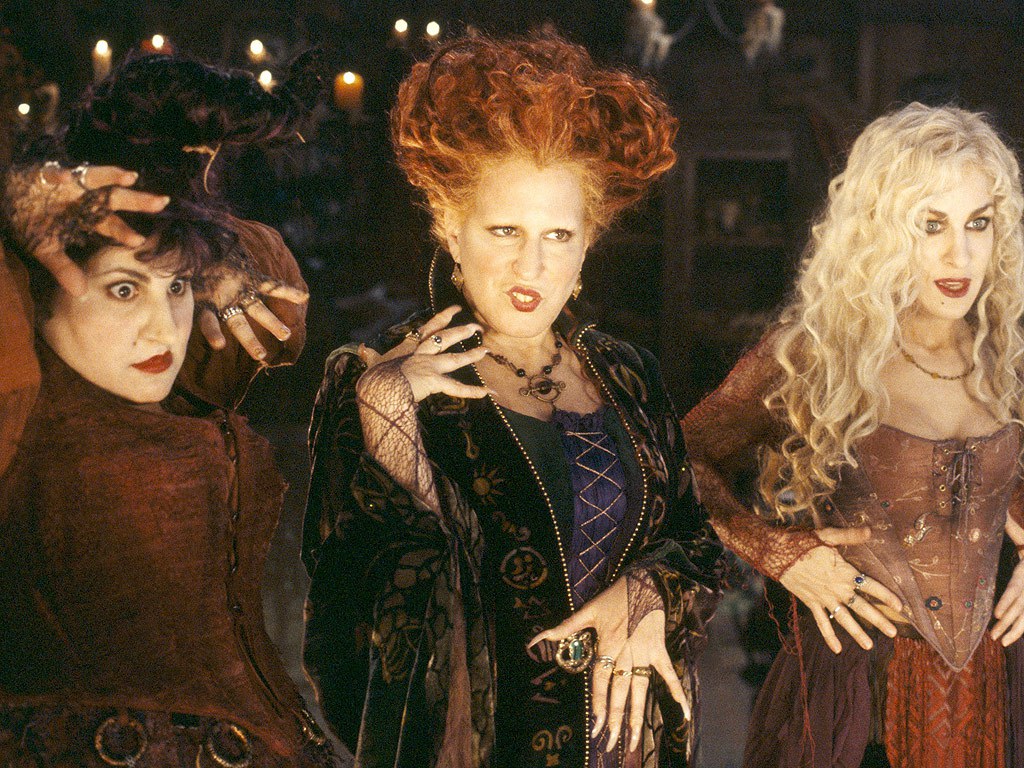When Tom and Jerry debuted to $14.1M in the final week of February, it blasted past all expectations–earning only $2.6M less than Wonder Woman 1984 in its own debut frame. The outsized opening for Warner Bros.’ family film—released simultaneously on HBOMax—may have come as a surprise, but the seeds for its debut success had been laid as early as last summer, when a micro-trend in exhibition began to emerge: the success (in Covid-relative terms) of family films during the pandemic.
The first major family film to hit U.S. theaters following the arrival of the pandemic in North America was 101 Studios’ The War with Grandpa, which exceeded Boxoffice Pro’s pre-release expectations in its opening weekend by earning $3.6M—this despite Regal Cinemas’ closure and a lack of marketing relative to earlier release Tenet. (See Boxoffice Pro’s interview with three of the film’s producers here.)
“Not a whole lot was expected of” War with Grandpa, says Boxoffice Pro Chief Analyst Shawn Robbins—but its family-friendly subject matter, the presence of Robert De Niro, and a lack of competition contributed to a slow and steady success story. Now at a $20.6M domestic gross—and still playing in approximately 500 theaters—Robbins estimates that the film, unlike most other pandemic releases, “probably still ended up making what it would have made” pre-pandemic—albeit over a longer period of time.
The same cannot be said of The Croods: A New Age, which “could have been a $100 million movie domestically” had it been released pre-pandemic, says Robbins. (Its predecessor notched $187.1M in 2013.) However, as it stands, the Universal release—with $53.6M domestic and $157.7M global as of this writing—has still emerged as a pandemic success story.
Prior to the release of Tom & Jerry, it was “the only game in town for families. And it’s a brand. I think that probably helped a lot,” says Robbins. Also on the film’s side was a November 25 release date that, through a combination of planning and luck, gave Croods a clear runway to holiday season success. The film was subject to several pre-pandemic delays (it was initially planned for release in 2017) before landing on December 23, 2020—and then, on November 19, Universal made the unexpected move of bringing the film forward to coincide with Thanksgiving weekend.
As other films vacated the end-of-year period, Croods stuck, giving North American theaters their highest opening since March. Lack of competition helped, as did coming out around the holidays, typically an important corridor for family movies. But there existed a big X factor that cast doubt on Croods’ ability to keep bringing audiences to theaters: the fact that it hit PVOD on December 18 at a $20 price point, giving the film only three weekends of theatrical exclusivity.
But even after hitting PVOD, The Croods’ theatrical business “was still pretty steady,” says Robbins. “That’s the fascinating thing.” The box office drop the week it hit PVOD, while significant (32.1%) was nowhere close to the 54.3 percent drop it experienced on its second weekend—the normal time for any movie to have its biggest week-on-week dip. In the weeks following Croods’ home video bow, things steadied out: A 16 percent drop two weekends later, followed by a 27.4 percent gain the next, with each subsequent weekend witnessing a modest back-and-forth in the film’s theatrical performance. “Even on Super Bowl weekend, it was down [only] 8 percent,” says Robbins. “That’s unheard of. Even family films get hurt on Super Bowl weekend, usually.” Moving through the holidays—where Robbins estimates that private cinema rentals and increased awareness of cinema safety contributed to ticket sales—Croods’ box office “really did steady out, despite that home availability.”
In Australia—ahead of the U.S./Canada market in terms of Covid recovery—a similar story emerges. “Family titles have certainly played a significant role in driving people back into cinemas,” says Stephanie Mills, director of sales, marketing, and content at HOYTS Cinemas. The Croods: A New Age stands as Australia’s second highest-grossing 2020 release, with The War with Grandpa (#5), Trolls: World Tour (#6), and The Witches (#8) all taking spots in the country’s top ten. With a gross of $16.29USD (approximately A$21.1M) after 11 weeks of release, in terms of box office The Croods: A New Age is sitting not far behind the first Croods film, which topped out at A$25.3M in Australia. The War with Grandpa, meanwhile, “has played particularly well on the Hoyts circuit. It has out-grossed titles that I would say are of a similar ilk, like the Diary of a Wimpy Kid franchise,” says Mills.
In addition, Mills notes, family titles are holding better week-on-week than they did pre-pandemic. Hoyts is “definitely seeing a slower drop-off than we did pre-pandemic” due to a lack of new content and subsequent lack of competition for screens. “Looking at 2019 as an example, the average weekly drop for family titles sat at 25 percent, whereas we have seen this reduce to 20 percent since the pandemic.”
With new content thin on the ground and many moviegoers unsure about returning to theaters, private cinema rentals have emerged as a viable strategy for cinemas worldwide—one which, in North America, has drawn in families to see both new and repertory programming. “Looking at the last few months, about 40 percent of our [private events]” have been centered around kids and families, notes Sheri Lawrence, VP, special events at Studio Movie Grill. “Birthday celebrations have been a huge success for all ages. Studio Movie Grill has always had strong business from events, but the pandemic created an opportunity for us to make a private event affordable and safe for families to share the experience of film, food, and fun together.”
Cinemark CEO Mark Zoradi, in the chain’s Q4 2020 earnings call, noted that more than half of the chain’s private watch parties purchased during that period consisted of library titles, with holiday family classic Elf leading the pack. “This library content could be watched for free at home on the sofa, but instead consumers chose to pay $99 to see it in the theater. This reinforces what we have consistently stated: People are yearning for normality, escape, and a fun out of home opportunity.”
Among repertory programming re-released into theaters during mid-2020, Robbins cites family titles Elf, The Nightmare Before Christmas, and Hocus Pocus as three films that “just clicked” for moviegoers. “Family films have been one of the genres which has been performing very well” agrees Mark Hirzberger-Taylor, CEO of Park Circus, a global sales agency and distribution company that helps exhibitors bring older titles back to the screen. Over Halloween 2020, the movie-of-choice for many U.K./Ireland cinemas—and their audiences—was Hocus Pocus, which became one of Park Circus’ most successful catalogue pushes. “The film actually made number one at the box office in the U.K. [on Halloween],” says Hirzberger-Taylor—earning £462,526 in the U.K. during October, “which is very high for that kind of release.”

As summer moved into autumn, many cinemas in Europe had to re-shut their doors, cutting them off from the holiday bump received by The Croods: A New Age in the domestic market. (Though the U.K.’s Showcase Cinemas did host sold-out screenings Home Alone in October.) Such was the case in Switzerland, where all the country’s cinemas were allowed to be open from early June through October, when a series of region-specific regulations began to go into effect; on December 12, cinemas had to close their doors entirely.
Still, in the summer and autumn months when Swiss cinemas were still allowed to welcome moviegoers, they had success with a few key family titles—despite the fact that they were largely already available on PVOD. Warner Bros.’ Scoob!, which bypassed theaters in North America, went day-and-date in Switzerland and a handful of other countries on July 8.
Says Pathé Suisse CEO Venanzio Di Bacco, “Scoob! was really strong. It was on streaming already. But people came and saw the movie.” The film eventually became Switzerland’s twelfth highest-ranking film of 2020 in terms of admissions. Universal’s Trolls: World Tour came in at 29 in Switzerland despite already being available for home viewing in half the country. (That would be the Swiss-German part; in the French part of the country, where it was a new film, it ranked 25.) The twentieth highest release of the year was the Hollywood import Playing with Fire, a December 2019 release that was re-upped post-pandemic. Of the older programming that Pathé Suisse brought to screens, the only one that really moved the needle for them was the Harry Potter series, which screened in August.
“I think the customers really wanted to come out to the cinema,” says Di Bacco. “They made the decision to go to the cinema, to not be at home. And then they decided in the cinema which movie they will see.” Having already committed to a group outing at the cinema—more common in June and July, during the school break—these families would often bypass Tenet (Switzerland’s second-best film of the year in terms of admissions) to instead watch whatever kid’s film happened to be playing, regardless of whether they could have rented it at home instead.
In other countries, films that bypassed theaters in the United States succeeded in drawing in audiences. Domestic grosses for Paramount’s The SpongeBob Movie: Sponge on the Run ($4.38M) surpassed those of The Broken Hearts Gallery, Bill & Ted Face the Music, The Empty Man, and Fatale, despite playing on a fraction of those films’ screen counts and only in Canada. In Russia, Soul debuted at number one and, per a representative from exhibitor Karo, has already grossed more in the country than any previous Pixar title. So far, it’s the second-highest grossing film of the year in Russia, surpassed only by local family title The Last Warrior: The Root of Evil, with fellow local family film The Little Humpbacked Horse ranking at number three. Karo reports that over Russia’s ten-day New Year’s holiday period, The Last Warrior earned fully half of the country’s box office. It also became the fastest film in Russia’s history to reach the 1.5B-ruble mark.
A lack of consistent international box office reporting makes it difficult to tell exactly how films that bypassed theatrical release in the U.S.—like Disney’s Soul and Mulan—did on a global theatrical scale, though Boxoffice Pro’s Robbins notes that “China was really the driver for both those movies” and probably “accounted for about half” of their global grosses. Moving forward, box office analysis of Disney’s Raya and the Last Dragon—released simultaneously in theaters and on Disney Plus in the U.S. on March 5—is complicated by ongoing negotiations between Disney and top theater chains.
At the same time, the opening weekend success of Tom & Jerry—and the box office run of Croods domestically and other children’s titles in international markets—points to “the fact that families, particularly parents with young kids, are just itching to go back [to the movies.] When the content is there, even if it’s available at home, they’ll still go out and see it in a theater,” said Robbins on the Boxoffice Podcast. Though we have yet to see a consistent stream of blockbusters arrive in theaters, the coming months do show glimmers of home for families wanting to get their kids out of the house for some affordable entertainment: Disney is so far sticking with their May 28 theatrical release date for Cruella, and Sony—no doubt influenced by Tom & Jerry’s opening weekend numbers—moved Peter Rabbit 2: The Runaway from June 11 up to May 14.



Share this post